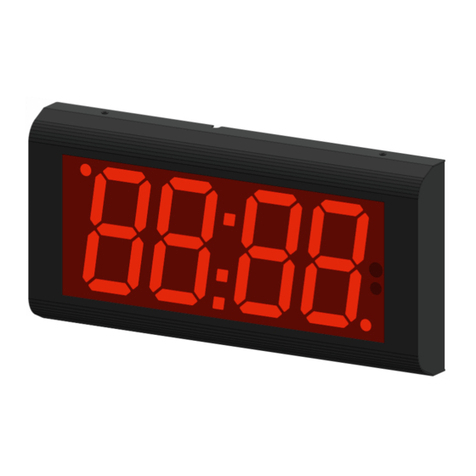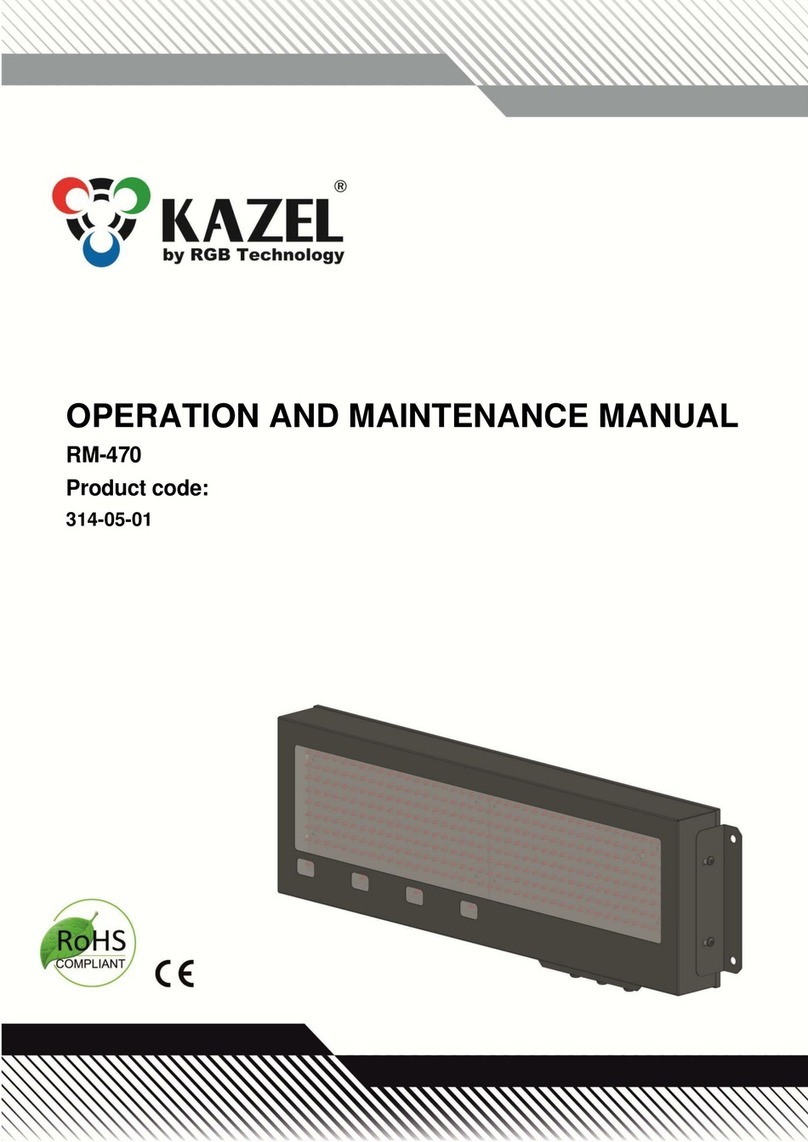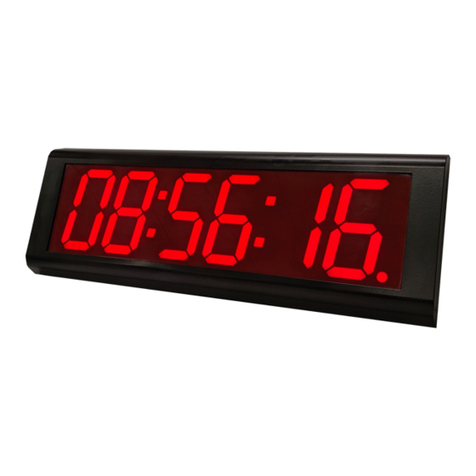
16.02.2016r. 5
4Installation of the device
Proper installation consists in mounting the device on a flat surface with the leads facing down. Only the correct
installation of the device ensures its proper operation and maintaining the device parameters, e.g. casing
tightness rating to satisfy the IP code.
NOTICE!
Before any installation or maintenance operations refer to the manual supplied by the manufacturer. Improper
connection to the mains power supply, incautious device installation, or improper use may cause the property
damage, loss of health or death from electrical shock! In addition, any failure to follow the manufacturer's
instructions may void your warranty.
NOTICE!
Keep in mind that all the components must be mounted with the leads facing down.
NOTICE!
It is forbidden to make any additional mounting points or any holes in the device assembly components.
4.1 ZB20 devices
The ZA20 devices are designed to display time, date, and optionally temperature. For the proper operation of the
device, it should be correctly configured. As a standard the device is configured using LAN.
4.2 ZB20 configuration
The configuration process consists in personalising the device through the embedded Web panel. The user, after
connecting the clock through the LAN inteface, can edit the display parameters of the clock.
4.2.1 Configuration of the device through the embedded website - Web panel
To connect with the clock, first you should configure the network card of the computer to which it is connected.
The proper configuration of the network card can be downloaded from http://rgbtechnology.pl/soft/. Having
configured the network connection correctly, you can, through a Web browser, connect with the embedded
website (Web panel), where you can personalise the device. On the embedded clock website, you may use the
following tabs:
TIME -> tab allowing you to configure the parameters connected with time;
DISPLAY -> tab allowing you to configure the parameters connected with the device display;
ALARMS -> tab allowing you to configure the parameters connected with alarms (option available in the
version with an audible signalling device);
ADVANCED -> tab allowing you to configure the advanced parameters of the device;
STATUS -> tab allowing you to read the device status.
The detailed description of the tabs is available in the device operation manual instr_hardware_037.




























